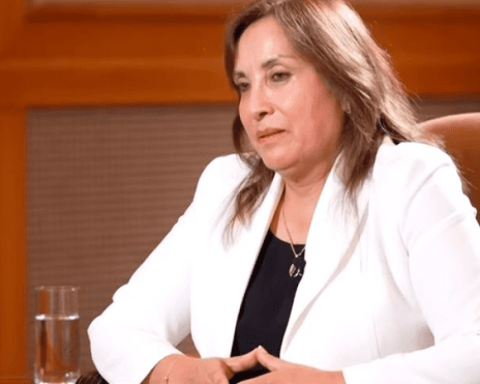The United States Federal Reserve (Fed) increased interest rates by a quarter of a percentage point (0.25 pp) and indicated that it has not finished raising them, despite the risk of aggravating the banking crisis that has shaken global markets.
The Federal Open Market Committee (FOMC) voted unanimously raise your rate target to a range of 4.75% to 5%, the highest since September 2007, when rates were at their peak on the eve of the financial crisis.
(See: The ‘moral hazard’ that bank bailouts like the SVB would generate).
It is the second consecutive increase of 25 basis points, after a series of aggressive movements that started in March 2022, when rates were close to zero.
“The US banking system is strong and resilient.The Fed said in a statement in Washington after a two-day meeting.
At the same time, officials warned that “Recent events are likely to lead to a tightening of credit conditions for households and businesses and to affect economic activity, hiring and inflation“.
(See: The causes of the recent series of air incidents in the United States).
The extent of these effects is uncertain.
Fed policymakers anticipate that rates close 2023 at around 5.1%, unchanged from the median of the estimates from the last round of projections in December.
By 2024, the median estimate increased from 4.1% to 4.3%.
Inflation and interest rates.
EFE
The rise and projections suggest that policymakers remain firmly focused on bringing inflation down to its bottom line. 2% target, which indicates that they consider the increase in prices (especially based on recent data) a greater threat to the growth than banking turmoil.
(See: The cities where millionaires buy more properties).
They also project confidence that the economy and financial system remain healthy enough to withstand a string of bank collapses.
At the same time, rising borrowing costs may exacerbate the banking crisis, especially since higher interest rates were on Treasury holdings that precipitated the collapse of Silicon Valley Bank (SVB) and threatened other banks.
If the Federal Reserve is underestimating the extent of financial rifts, itthe latter measure risks increasing pressures that could push the economy into recession.
Although the rise was in line with the expectations of most economists and traders, it was one of the most difficult decisions of the Fed in recent years, as some central bank watchers and investors called for a pause to mitigate the risk of financial contagion following the collapse of several banks.
(See: Another blow: Silicon Valley Bank’s parent company goes bankrupt).
“The Fed anticipates that additional monetary policy tightening may be appropriate to achieve a tight enough stance to bring inflation back to 2% over timeFed officials said at the end of the meeting.
The change in the language of the statement (monetary policy makers had previously said it would be appropriate “keep increasing” the reference rate) indicates that they want add flexibility to pause if necessary.
They also removed a reference to inflation having eased, saying price pressures remain high.
(See: Banking crisis: what is happening with the banks).
And it was noted that employment growth has picked up in recent months, and “records a solid pace.”
The Fed said it would maintain the same pace of reducing its balance sheet, a process known as quantitative adjustment, although recent emergency measures have increased assets again.
The central bank will keep the monthly limits of 60,000 million dollars for Treasury bonds that can mature without being reinvested and $35 billion for mortgage-backed securities.
Earlier in the month, before the SVB bankruptcy, Powell indicated that the Fed could raise rates again by as much as 50 basis points at this meeting to combat persistent inflation and an overly tight labor market.
The collapse of SVB and two other banks in the United States was followed in Europe by the sale of Swiss banking giant Credit Suisse Group AG.
This rate hike also It is the ninth in a year to fight inflation, although it is less than that anticipated by the Fed when the banking crisis had not yet broken out.
In addition, the central bank forecast lower-than-expected inflation in 2023 (3.6%) and lowered its economic growth forecast for the United States.
Bloomberg














